On This Day in Aviation History: May 9, 1926. Over the North Pole…or not?
Contributor: Barry Fetzer
Sources: Wikipedia
According to Wikipedia, “Inaptronyms are names inappropriate for what the person does, such as Rob Banks, who is a British Police Officer. On the other hand, an aptronym, aptonym, or euonym is a personal name aptly or peculiarly suited to its owner”. Some notable ones are Usain Bolt, Jamaican Olympic sprinter; Sara Blizzard, meteorologist and television weather presenter for the BBC; and the head of the medical journal “Brain” was named Henry Head and he was succeeded by Russell Brain. Tiger Woods is another good one, his name forecasting his golfing prowess. We’re going to see Tiger here in Southern Pines/Pinehurst in a month at the US Open.
Another good aptronym is Richard E. Byrd, naval aviator, polar explorer, and admiral.
So, let’s look at Byrd and some of his early aviation exploits forecasted by his name. According to History.com, “Polar explorers and aviators Richard E. Byrd and co-pilot Floyd Bennett flew over the North Pole on May 9, 1926, in the Josephine Ford, a triple-engine Fokker monoplane. It would have been the first time an aircraft flew over the top of the world. The pair had taken off from Spitsbergen, Norway, and reportedly covered the 1,545-mile trip to the pole and back in 15 hours and 30 minutes.
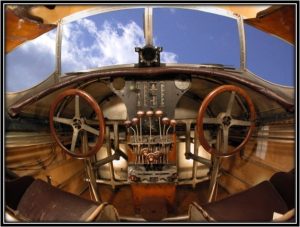
Cockpit of the 1925 Fokker F.VII Tri-Motor Airplane, “Josephine Ford,” flown Over the North Pole by Richard Byrd. Photo courtesy The Henry Ford Museum.
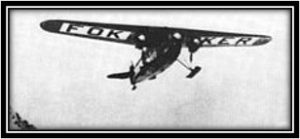
Byrd’s Ford Tri-motor “Josephine Ford” in flight. Photo courtesy Wikipedia.
“The discovery in 1996 of a diary that Byrd had kept on his famous flight seemed to suggest that he and Bennett may have turned back 150 miles short of the pole because of an oil leak. If so, Italian adventurer Umberto Nobile, American Lincoln Ellsworth, and Norwegian explorer Roald Amundsen (who was in 1911 the first person to reach the South Pole by land) would receive the credit for their airship flight over the North Pole on May 12, 1926, three days after Byrd and Bennett’s flight.
“Nevertheless, Byrd’s place in polar exploration is firmly set; in 1929, he established a U.S. base in Antarctica and late in the same year, accompanied by aviator Bernt Balchen, he made the undisputed first aircraft flight over the South Pole.”
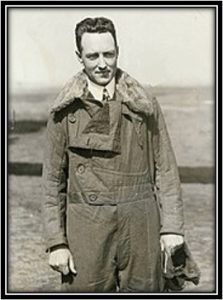
Richard Byrd in flight jacket, 1920s. Photo courtesy Wikipedia.
And Bryd wasn’t finished. Fast forward to June, 1945 aboard the USS Essex (CV-9). In the closing days of the war, Essex took part in the final raids against the Japanese home islands from 10 July to 15 August 1945. Now Admiral Byrd is a staff officer and advisor aboard the USS Essex and also served on the United States Strategic Bombing Survey team formed to evaluate the effects of strategic bombing in Europe and the Pacific, including to evaluate the effects of the atomic bombs dropped on Hiroshima and Nagasaki.
So why does this have anything to do with this little vignette? Byrd was a friend and a contemporary of Captain Felix Baker, Captain of the US Aircraft Carrier USS Randolf (CV-15) fighting against Japan in the Pacific. Both Byrd and Baker were early US Navy aviators.
Captain Baker’s daughter (named Randy, namesake of her dad’s USS Randolf) is a local (Southern Pines) neighbor and friend who was kind enough to share the below photograph of a letter written to Captain Baker’s fiancée, Miss Davis, who would ultimately become Randy’s mother. Miss Davis was also a Secretary in the Navy Department but probably did not have the clearance to read the letter that Admiral Byrd wrote to her.
The context of the original letter that “was lost in a crashed plane” as recounted by Byrd is unknown, but Admiral Byrd’s letter to Miss Davis, below, is particularly interesting in relation to his “letting the cat out of the bag”—one of America’s biggest and best kept secrets (best kept secrets until the Rosenberg’s were convicted of, and executed for, sharing our nuclear secrets with the Soviet Union)—about aspects of the nuclear bomb over a month before it would first be used on Hiroshima on August 6, 1945.
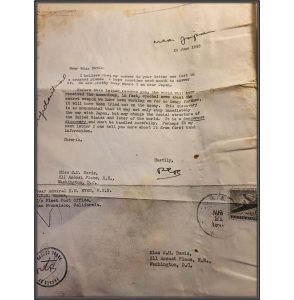
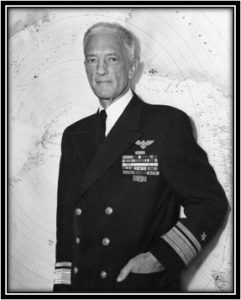
Portrait of American naval commander and explorer Rear Admiral Richard E Byrd (1888-1957), as he poses in front of a map of Antarctica, March 15, 1956.
Photo courtesy PhotoQuest/Getty Images.
By the way, my friend Randy’s name happens to be an aptronym too. Randy has grit. She keeps making-way…plowing ahead…she keeps on keeping on like the USS Randolf did in WWII, even after a successful Kamikaze attack. Just like her name forecasted she would.







